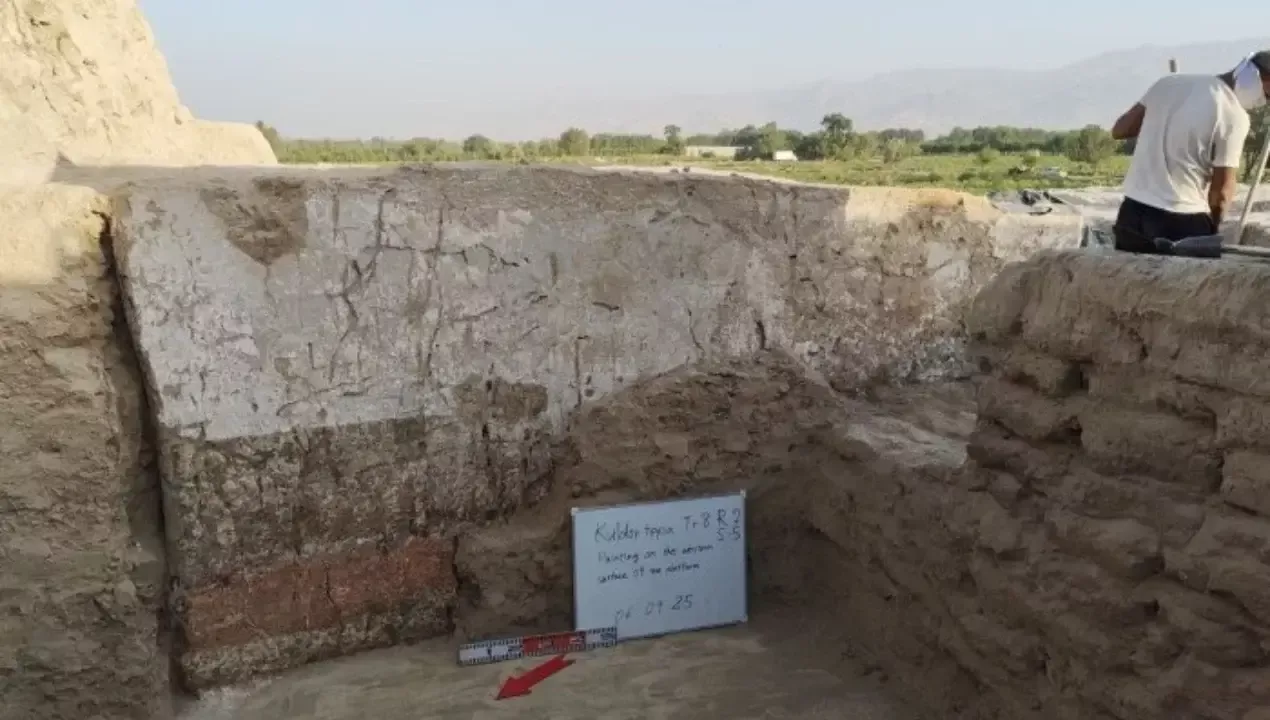
Scientific research conducted at the Quldortepa archaeological site located in the Urgut district of Samarkand region is revealing new historical secrets. This was reported by Zamin.uz.
Archaeologists have succeeded in finding remains of a temple dating back to the early Middle Ages at this site. These findings are of great importance not only for studying local history but also for gaining a deeper understanding of the history of the entire region.
During the excavations, the ceremonial hall of the temple, a columned veranda, and corridor rooms were identified. It was also found that decorations have been preserved on the walls of the rooms to this day.
The walls are decorated with geometric patterns in red and black on a white background, considered a unique example of the architecture of that era. One of the most notable finds is a juniper column approximately 4.75 meters long.
Additionally, researchers discovered a mirror produced during the Chinese Han dynasty and coins associated with the Sogdian ruler Ukkurt Chamuk. These findings prove that Quldortepa was a center of trade and cultural relations at that time.
According to sources, Quldortepa has long been known as a rural center. In Chinese written sources, this place is recorded as Mi or Mi-moxe, while in Arabic and Persian literature it was famous under the name Maymurg.
This indicates that Quldortepa was closely connected with the cultural civilizations of various peoples. Research at this site continues, and many more interesting discoveries are expected in the future.







